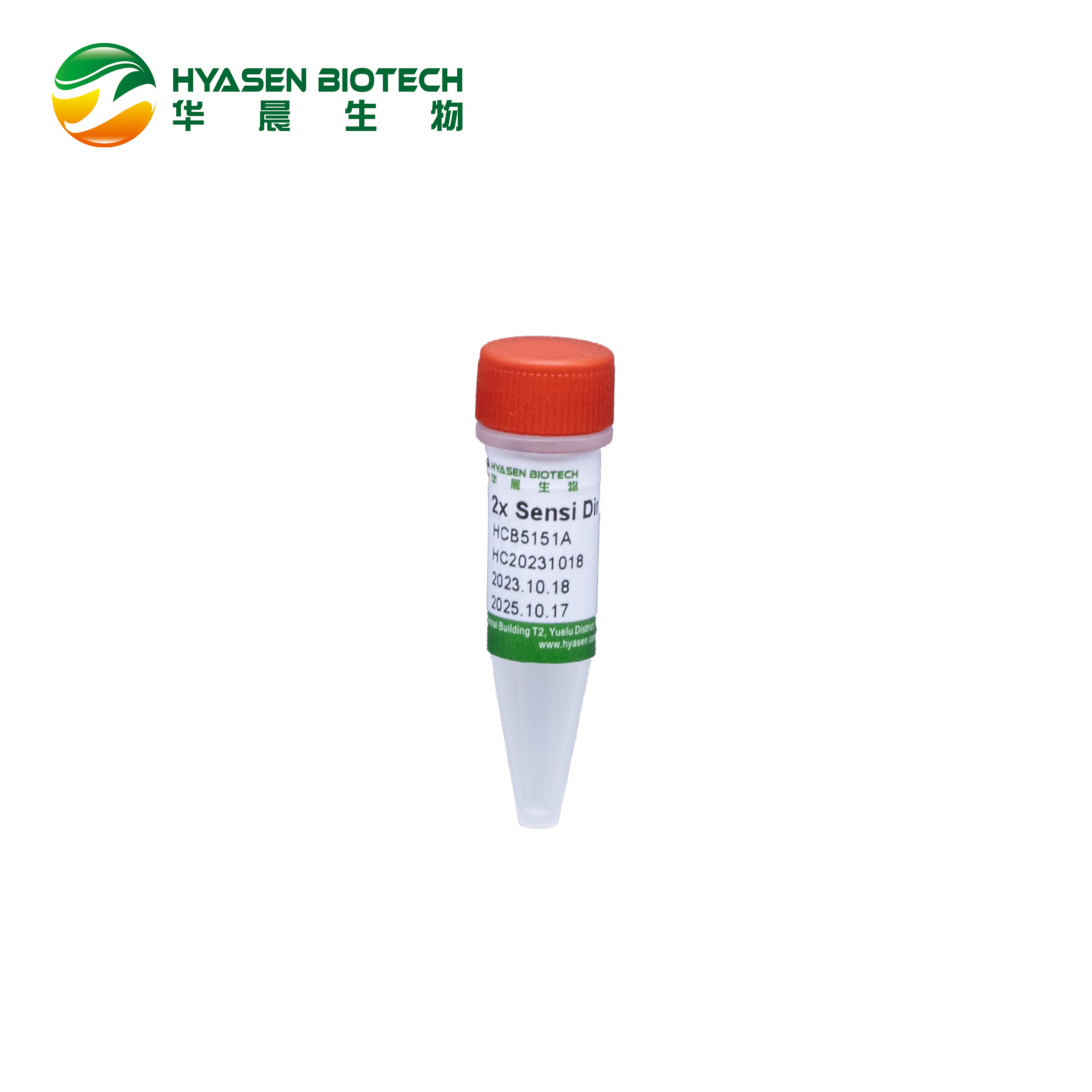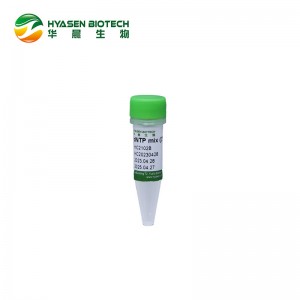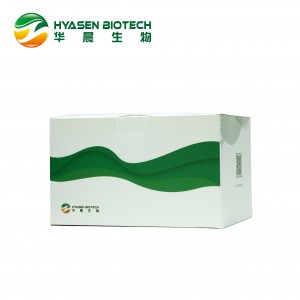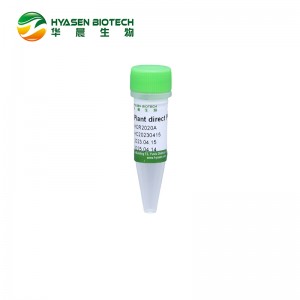
2×Sensi Direct Premix-UNG (Probe qPCR)
Cat No: HCB5151A
SensiDirect Premix-UNG (Probe qPCR) is designed to perform PCR directly from samples without DNA extraction or sample preparation. This reagent consists of hot-start DNA polymerase, uracil DNA glycosylase (UNG), RNase Inhibitor, MgCl2, dNTPs (with dUTP instead of dTTP), and stabilizers, for quantitative PCR (qPCR). This reagent preforms high inhibitor-tolerance, and thus it can be directly applied to the detection of samples like throat swab, saliva, anti-coagulated whole blood, plasma, and serum without DNA extraction. The reagent uses proprietary buffer for qPCR with mixed enzymes of anti-inhibitory DNA polymerase and UNG enzyme. Therefore, it can obtain a good amplification of target genes in samples containing inhibitors and inhibit false positive amplification caused by PCR residual and aerosol pollution. This reagent is compatible with most fluorescent quantitative PCR instruments, such as Applied Biosystems, Eppendorf, Bio-Rad, Roche and so on.
Components
1. 50×SensiDirect Enzyme/UNG Mix
2. 2×SensiDirect Premix Buffer (dUTP)
Storage conditions
All components should be kept at -20℃ for long-term storage and 4℃ for up to 3 months. Please mix thoroughly after thawing and centrifuge before using. Avoid frequent freeze-thaw.
Cycling Protocol
|
Step |
Temperature |
Time |
Cycle |
|
Digestion |
50℃ |
2min |
1 |
|
Polymerase activation |
95℃ |
1-5min |
1 |
|
Denature |
95℃ |
10-20s |
40-50 |
|
Annealing/Extension |
56-64℃ |
20-60s |
Pipetting Instructions
|
Reagent |
Volume per reaction |
Volume per reaction |
Final Concentration |
|
2×SensiDirect Premix Buffer (dUTP) |
12.5µL |
25µL |
1× |
|
50×SensiDirect Enzyme/UNG Mix |
0.5µL |
1µL |
1× |
|
25×Primer-Probe Mix 1, 2 |
1µL |
2µL |
1× |
|
Sample 3, 4 |
- |
- |
- |
|
ddH2O |
- |
- |
- |
|
Total volume |
25 μL |
50 μL |
- |
1. The final concentration of primer is usually 0.2μM. For better results, the primer concentration can be optimized within the range of 0.2-1μM.
2. Generally, the probe concentration can be optimized within the range of 0.1-0.3μM. The optimal concentration of theprobe is related to the real time PCR amplification instrument, the type of probe, and the type of fluorescent labeling substance. Please refer to the instrument manual or the specific requirements of each fluorescent probe.
3. Different types of samples contain different types and content of inhibitor and copy number of target gene. The sample volume should be considered by actual condition. Make a dilution of the sample by adding nuclease-free water or TE Buffer, if necessary.
4. Recommended volume of different samples:
|
Sample |
Volume for one 50 μL reaction |
Maximum ratio |
|
Anticoagulated whole blood |
2.5 μL |
5% |
|
Plasma |
15 μL |
30% |
|
Serum |
10 μL |
20% |
|
Throat swab |
10 μL |
20% |
|
Saliva |
10 μL |
20% |
Quality Control
1. Function detection: sensitivity, specificity and repeatability of qPCR.
2. No exogenous nuclease activity: no exogenous endonuclease and exonuclease pollution.
Notes of Product
1. This product employs a novel type of hot-start DNA polymerase, which can be activated in 1-5 minutes.Since its reaction buffer has been optimized,it is more suitable for double or multiple fluorescence quantitative PCR using probe method.
2. If the Rn value of the PCR amplification is too low or the amplification is obviously inhibited,decreasing the sample amount, increasing reaction volume or previous dilution of the sample may improve the results.
3. The collection of blood, saliva, urine, throat swab, etc. should follow the clinical criteria requirements, and fresh sample can be used to prevent nucleic acid degradation.
4. Since different amplicons have different utilization efficiency to dUTP and sensitivity to UNG, the reagents should be optimized if the detection sensitivity decreases when using UNG system. Please contact us for technical support if needed.
5. To avoid amplification of carryover PCR products between one-step reactions, dedicated experimental area and pipette are required for amplification. Operate with gloves and change frequently and do not open the reaction tube after PCR amplification.














